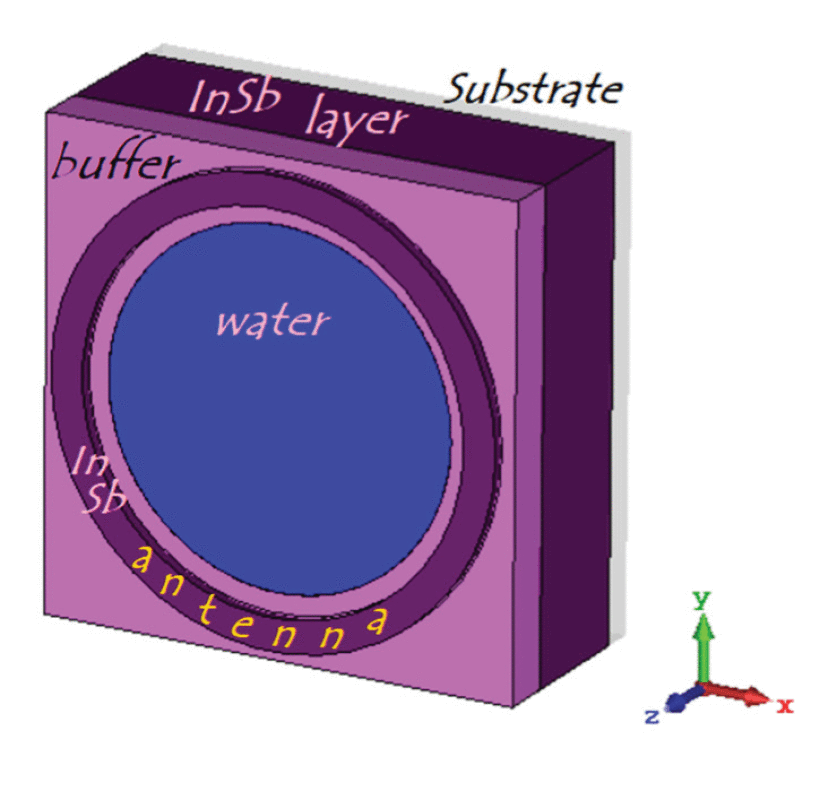Colon Cancer Detection by Designing and Analytical Evaluation of a Water-Based THz Metamaterial Perfect Absorber
Colon cancer is slow-progressing cancer. Still, according to the study, it is the second-leading cause of cancer-related deaths in the United States. Since colon cancer progresses very slowly, its early detection and effective treatment can sharply reduce the fatality rate. A colonoscopy is an effective but highly invasive diagnostic procedure for colon cancer.
Cancerous tissues have higher water concentrations than normal, healthy tissues. Recently, researchers exploited this characteristic of cancer cells to develop a device for cancerous tissue detection.
The researchers proposed a novel indium antimonide (InSb)-based device to detect the change in the spectral response of metamaterial when exposed to electromagnetic waves within the terahertz (THz) range in combination with cancerous colon tissues. The absorption spectra of THz electromagnetic waves exhibit high sensitivity to water content.
The prototype tries to incorporate a dielectric material into a semiconductor. Precision patterning of semiconductors and variations in external temperature lead to the frequency tuning of metamaterial resonance. Various optical and photonic biomedical sensing and detecting device designs use the frequency agility feature of metamaterials in the THz regime.
The prototype uses a three-layer microstructure design. A dielectric buffer placed between a thick film of semiconducting THz metamaterial and a semiconductor antenna makes the sandwich pattern. The film has an indium antimonide (InSb) layer microfabricated on top of a substrate layer. The traditional photolithography technique etches an InSb antenna on the top. A buffer layer fabricated by chemical vapor deposition completes the device.
A commercial CST microwave studio software based on the three-dimensional finite difference time domain (FDTD) method computer simulated the spectral response of the prototype. The 3D spectrum of incident THz EM waves represents the electric field in the x-direction, the magnetic field in the y-direction, and perfectly matched layers in the z-direction.
The electromagnetic excitations propagating through the metal-dielectric interface are called surface plasmon polaritons (SPPs). The SPPs have charge motion in the semiconductor layer and EM wave motion in the dielectric layer. They propagate along the interface of the dielectric and semiconductor before getting either absorbed or scattered away. The plasmonic mode achieves perfect absorption when it is excited at the same frequency as the localized mode of the semiconductor-dielectric-semiconductor microstructure.
The proposed device analyzes the differences between the absorption spectrum for different samples to detect cancerous tissue. The comparatively high water retention of cancerous colon tissue leads to higher absorption of THz waves. A laboratory setup using a THz laser and detector can calibrate the device. A THz laser light incident on the device containing sample tissue was collected and monitored by the THz sensor on the other side of the device. The readings from known healthy tissue samples establish the baseline. The experimental setup testing showed a definite absorption spectrum shift in the THz regime with the cancerous tissue sample.
The proposed InSb-based device can easily be fabricated, safe, and highly accurate. The low photon energy of THz radiation negates any ionization hazard for biological tissues. The smaller wavelength of EM waves in the THz regime helps get a high-precision diagnosis.




